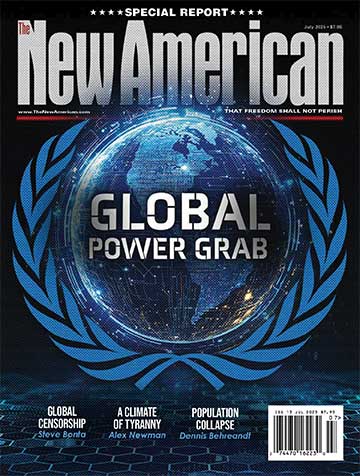
Prejudice about prejudice is nothing new. For example, the “conventional” wisdom in 2008 held that Barack Obama’s race might be an impediment to his presidential ambitions, and a poll did show that six percent of Americans were less likely to vote for him because of his race. Yet the same poll found that nine percent of Americans were more likely to support him because of his race. And now there’s another story illustrating the difference between real and “feel”:
A major study has found that it is men, not women, who suffer workplace discrimination.
Per PsyPost:
A recent comprehensive study sheds light on the trajectory of gender discrimination in job applications over the last 44 years. The findings reveal that while discrimination against women in traditionally male-dominated jobs has seen a significant decrease, biases against men applying for roles typically viewed as female-dominated persist stubbornly.
Furthermore, both laypeople and academics appear to overestimate the current extent of discrimination against female applicants, indicating a gap between societal perceptions and the realities of gender bias in the workplace. The new findings were published in the scientific journal Organizational Behavior and Human Decision Processes.
As for this study’s vastness, “At the heart of the research was a pre-registered meta-analysis, a statistical technique used to synthesize results from numerous studies to discern overarching trends,” PsyPost also reports. “The researchers meticulously gathered data from field audits [conducted between 1976 and 2020], where fictitious job applications, identical in qualifications but varying by gender, were submitted to real-world job openings.”
The outcome? The “average odds of male applicants receiving a callback were 0.91 times the odds of equally qualified female applicants, which suggests a slight overall bias in favor of female applicants,” PsyPost informs. “However, a high level of heterogeneity was observed among the studies, indicating varied outcomes across different contexts and settings.”
“Job type significantly moderated the effect of gender on callbacks,” the site continues. “Specifically, male applicants were less likely to receive callbacks than female applicants for female-typed jobs, with an odds ratio of 0.75. For male-typed and gender-balanced jobs combined, the odds ratio was closer to neutral at 0.97.”
In other words, anti-male discrimination is the norm, with men enduring a slight bias even with respect to traditionally male/sex-neutral professions.
(This is not surprising since there’s been a strong push, often encouraged via the threat of an Equal Employment Opportunity Commission discrimination lawsuit, to recruit women into traditionally male fields.)
This said, some may wonder which men are bearing the brunt of the discrimination. For instance, they “refuse to say which males are disadvantaged,” complains MSN commenter “Slavko Pjanic.” “In Canada, if you are a White male there is no chance of getting a government job.”
Regardless, don’t expect this anti-male discrimination to cause much lost sleep; after all, most people aren’t even aware of it. In fact, the meta-analysis study showed that both laymen and academics “were found to overestimate the extent of ongoing discrimination against female applicants in traditionally male-dominated jobs,” PsyPost further relates. “This misalignment suggests that perceptions of gender bias in hiring may lag behind actual improvements or, conversely, reflect a generalized skepticism about the depth of societal progress towards gender equality.”
In other words, the ’50s called, and they want their social assumptions back.
But, actually, this “misalignment” reflects decades of inundation with the “narrative,” effected by the mainstream media, academia, entertainment, and, more recently, Big Tech. When people hear nothing but specious stories filled with sophisms about “male privilege,” it has the desired effect.
As an example, I remember when someone close to me was shocked to learn, a couple of decades ago, that more women than men were attending college.
Yet the meta-analysis is hardly the first to reveal our time’s anti-male spirit. PsyPost reported last year, for instance, on research showing that pro-female/anti-male biases are more significant than racial ones on “implicit association tests.”
The left-wing Washington Post admitted in 2018 that the “worst thing to be in many Democratic Primaries” is a “white male.”
The Republicans aren’t immune from this phenomenon, either. In 2022, top GOP strategists were actively courting non-white and female candidates for that year’s midterm elections. The direct motivation?
“Every Republican who flipped a Democratic House district in 2020 was a woman or person of color, and party leaders want to replicate that success on a larger scale,” wrote Politico at the time.
In reality, though, feminism-borne bias takes many forms. For example:
- We hear much about the male-female wage gap favoring men — even though it has been definitively shown to be due to the sexes’ different lifestyle choices and not unjust discrimination — but hardly anything about the intersex workplace death gap; i.e., men account for 92 percent of such mortality.
- We hear about the consequences of male dangerousness (e.g., crime, murder), but not the glories of male dynamism (e.g., millions of lives saved via modern medicine and science).
- Schools have become female-centric over the last many decades; this is part of the reason boys are now lagging behind girls academically.
- Domestic violence is considered a characteristic male fault even though females are actually more likely to initiate it; the same is true of male/female teen-dating violence.
This anti-male prejudice skews people’s conception of reality and, along with confusion over sex roles, leads to what I’ve dubbed “The New Chivalry” (advantaging women via laws and politically correct social codes). It won’t change, either, until the prevailing prejudices do. For, sadly, man has ever been guided more by prejudice than prudence.




